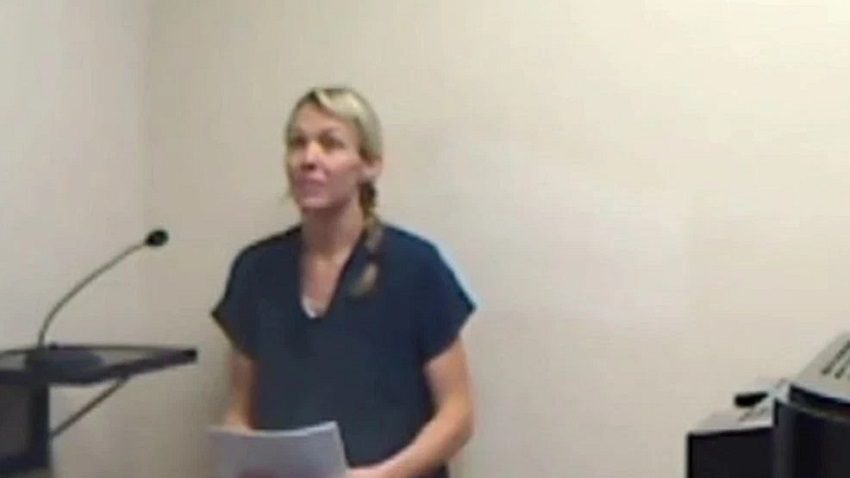Salt Lake City, UT — Domestic violence continues to escalate across Utah, with shelters and support services overwhelmed by the increasing number of victims seeking refuge. Despite the growing crisis, crucial budget requests to address these pressing issues were rejected during the 2025 legislative session, leaving those most in need without sufficient resources. The consequences of these budget cuts are becoming more evident, as shelters fill to capacity and waiting lists for support services continue to grow.
Erin Jemison, Director of Public Policy for the Utah Domestic Violence Coalition, recently sat down with Wendy Halloran, Chief Investigative Reporter at 2News, to discuss the ongoing struggles faced by victims. Jemison didn’t hold back, emphasizing that the rejection of two critical funding requests had dire consequences for victims in the state.
“Victims are now facing longer waits for shelter, and many are left without the support they need in their time of crisis,” Jemison said. “The problem is only getting worse.”
As domestic violence cases rise in Utah, one particularly harrowing incident underscores the dangerous reality many victims face. On May 18, 2024, Salt Lake City police officers responded to a call from a concerned co-worker who feared for the safety of a woman attempting to leave her abusive relationship. The situation, captured on body-worn cameras, depicted a tense interaction as officers tried to safely extract the woman from the home of Daymian Hughes.
The woman, visibly frightened and shaking, was attempting to leave Hughes, but was caught in a cycle of fear and manipulation. Despite the officers’ urging and attempts to help, she remained trapped in a situation marked by coercion. The officers were heard pleading with her to escape, even suggesting she might need to jump out of a window to break free from the situation.
“We want him by himself in there, if that’s the best scenario, they both come out,” one officer said on the footage, showcasing the urgency of the moment.
Despite Hughes’s attempts to control the situation and prevent the victim from cooperating, officers eventually arrested him. The victim, though, admitted her fear of him and disclosed that she did not feel free to leave. Her reluctance highlighted the complicated dynamics often involved in domestic violence cases, where victims are coerced and controlled by their abusers, making escape difficult and dangerous.
Though law enforcement responded effectively in this particular case, the lack of adequate funding for domestic violence services continues to create a significant barrier for many victims in Utah. With shelters operating at full capacity, victims face the harsh reality of limited options for safety and support. Jemison stressed the urgency for lawmakers to respond to this crisis and provide the necessary funding to ensure that victims have a safe place to turn.
“When a shelter is full, there’s nowhere for these individuals to go,” Jemison explained. “We need a response from lawmakers to provide additional resources to help those in need.”
In addition to the ongoing struggles with domestic violence, a troubling obstruction of justice case is making headlines in Utah. Thomas Ray Gledhill and Rosalie Christianson Gledhill, the parents of Gledhill, have been arrested in connection to the disappearance of Johnson. The Gledhills are accused of hindering the investigation by allegedly cleaning up the scene after the shooting that police believe occurred at Gledhill’s home.
Court documents reveal that Gledhill messaged her father on Sept. 19, asking for $13,000 by the end of the week. The exact purpose of the funds remains unclear, but it raises questions about the Gledhills’ involvement in the disappearance. Thomas Gledhill reportedly admitted to spending less than an hour cleaning around the house after Johnson’s disappearance, though he claimed not to have entered the master bedroom where the shooting allegedly took place. Neighbors reported seeing both Gledhills cleaning the house late into the night, an odd detail that points to possible attempts to cover up evidence.
Further complicating matters, data from Gledhill’s cell phone shows she only contacted her father in the days leading up to Johnson’s disappearance. These details suggest that the Gledhills may have been more involved in the case than they initially let on.
As both cases unfold, the need for comprehensive support for victims of domestic violence and stronger accountability for those involved in criminal behavior becomes ever more urgent. Law enforcement and advocacy groups continue to call for a broader response from lawmakers to address the increasing demand for domestic violence services. In the meantime, victims like the one in the Salt Lake City incident will continue to face difficult and often dangerous decisions with limited resources to help them escape.
With domestic violence cases rising and law enforcement agencies stretched thin, it remains to be seen whether Utah’s policymakers will prioritize the safety and well-being of the state’s most vulnerable residents. As for now, victims are left grappling with an uncertain future in the face of overwhelming odds.

